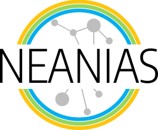Modern radioastronomy is currently undergoing a revolution e.g. with a new generation of interferometers such as the game changing Square-Kilometre Array (SKA), which is an international collaboration involving over 100 scientific and technological partners from 20 countries; upon its completion this will be the largest radio interferometer on earth.
Such instrumentation infrastructures spearhead the next generation all-sky surveys towards a brand-new paradigm shift as multiwavelength all-sky surveys are expected to replace traditionally executed single-object observations, enabling to perform novel statistical studies and thus revealing previously unknown patterns and trends. The scientific community is facing an emerging flurry of enormously large, incredibly rich and highly complex data volumes, e.g. when fully operational SKA is expected to generate data rates largely exceeding the global Internet traffic. The associated science-ready data products will pose extremely challenging technological demands on traditional approaches, e.g. analysis and imaging software tools will have to be adapted at various levels, if not completely re-designed from scratch, so as to run efficiently at scale with satisfactory performances. An earlier blog article discussed recent technological advances in the game engines and virtual reality fields relating to NEANIAS which is exploiting new tools and approaches to prototype services for agile, fit-for-purpose and sustainable offerings accessible through the European Open Science Cloud (EOSC) to handle emerging, next generation radioastronomy data. The NEANIAS S1 services are delivering optimised cloud-based visual discovery for multiwavelength astrophysics datasets, ensuring scalability and exploiting innovative interfaces through virtual reality. We are building upon the Astra Data Navigator (ADN), which is a 3D visualisation environment supporting interactive data exploration and navigation for large stellar catalogues developed around Unity3D. This article presents a brief survey of technological solutions for accessing and exploring large scale astronomical catalogues. We then focus on ADN describing its core functionalities, current release and roadmap of future developments. Enabling ADN features for suitable VR interfaces is also discussed prior to summarising our work results and pointing towards potential future developments.
